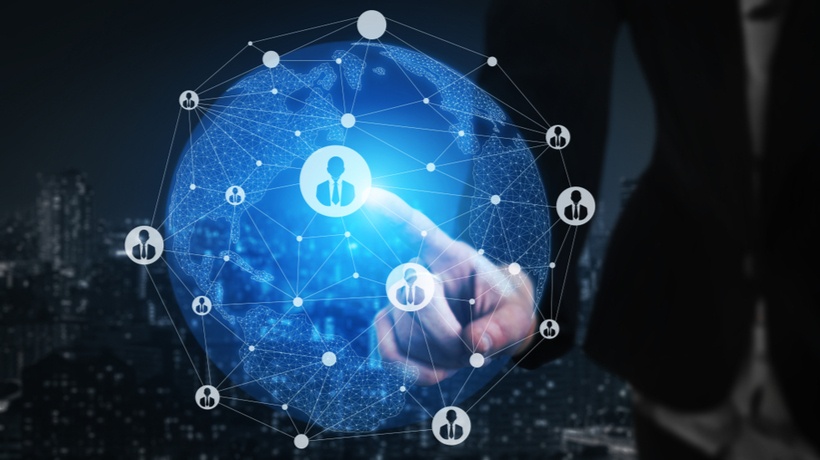Provide Quick Answers To Your Employees
The “digital economy” is a term we usually associate with blockchains and cryptocurrency. But the truth is, digital learning is a part of the digital economy too. Understanding how on-demand learning and microlearning fit into the digital economy and are, to some degree, a reaction to how the digital economy has shaped human activity will help you understand how to best take advantage of these modes of learning.
What Is The Digital Economy?
The digital economy, to put it simply, is a phrase to describe the processes of production and consumption in the digital sphere. In practice, this is a very complex world. It covers questions like “How long of a video are people willing to watch when they see it on social media?” and “How much money are people willing to spend on a phone app?” and contains every exchange that happens across the web, from an Amazon purchase to an email newsletter subscription to social media usage, and every other way consumers engage with digital goods and content.
How The Digital Economy Changes The Way People Engage With Content
In the digital economy, one of the most valuable human resources is attention. Producers are constantly seeking the attention of consumers through content, whether it’s a cooking video with an ad placed in the middle, an Instagram post hoping to get lots of likes and comments, or an article (like this one!) hoping to educate consumers on what the producers have to offer.
In response, consumers do their best to preserve their attention resources. They do this by being unwilling to watch long videos, skimming articles instead of reading them in-depth, not opening emails, and scrolling through the web as quickly as possible without being sucked in by something unrelated to their task. They even spend money to preserve their attention resources by buying apps to block ads, buying apps that promise to reduce their email clutter, and so on and so forth.
As a counter-response, producers try to create content that is worthy of the attention and engagement of consumers. They do this by creating content that is:
- Concise
- Hyper-relevant
- Using easy-to-skim formats
- Immediately useful
- High-quality in production
- Offering something to the consumer—whether it's knowledge, cultural capital, discounts, or more
- Accessible wherever, whenever the consumer is
- Utilizing psychology to be addictive and provocative
This means in the digital realm, consumers are absorbing lots of content at a fast rate and are quickly scrolling past content unless it proves itself relevant and useful upon first glance. They also skip over or skim through longer content.
How The Digital Economy Changes Learning
Because the way people engage with content has changed, educational content also has to change to keep up with these new modes of engagement.
Contrast the above traits of content created for the digital economy with the traits of traditional modes of learning:
- Sessions lasting 45 minutes to an hour
- Information offered is broad and in-depth
- Meant to be useful later—can not be referred to in the moment of need
- Lecture-based—lack of video, image, or sound production
- On the producer’s schedule, not the consumer’s schedule
Microlearning and on-demand learning are inventions created to have more of the traits that digital economy-friendly content has. More concise content, available anywhere and anytime, on hyper-specific topics makes it usable for a group of consumers that has no interest in content that isn’t immediately useful and doesn’t fit into their lives.
Think of it this way: When people have questions about what to do, they turn to Google to get quick answers. On-demand learning and microlearning want to be the educational version of these quick answers for company employees. Providing this content allows employees to access the company-approved best practices for everything from coding to client relations to chopping tomatoes. If employees have to consult notes from a seminar they took two years ago, or scroll through an hour-long lecture to try and find the exact moment where the training provided an answer, they are unlikely to do it at all and will likely go their own way or turn to other resources, which may not have the correct information.
The Importance Of Data In The Digital Economy
One aspect of the digital economy we haven’t yet touched on is data. Data drives so much of how producers create content. Many producers know everything about how users engage with their content: page views, how long they looked at a page or watched a video, if they went on to purchase a product or not, and more. They also use data, in combination with AI, to do part of their job for them and deliver relevant content to the users.
Data is also an important part of the role that microlearning and on-demand learning play in the digital economy. Understanding your users is key to meeting many of the requirements for content that is worthy of user attention. Data can be tracked easily with a high-quality digital learning platform.
For example, noting whether users finish watching a particular microlearning video can give you clues as to whether that topic is relevant to the users, or of an appropriate length. Noting which topics the users click on the most can tell you which content could be taken down, and which content your employees need more of. Digital learning is also starting to embrace the use of AI to present courses to users that are relevant to the other courses they’ve been interested in.
It’s important to note that no data collection can replace the human element. Getting to know your employees and having conversations with them about their needs for professional development is going to have a bigger positive impact than millions of data points. In this way, learning content is very different than most in the digital economy. You, the producer, have a real relationship with the consumer—your employees. However, data can be a useful way to get an idea of problem areas in a learning ecosystem that could have hundreds and thousands of users.
Ask Yourself: How Does Your Content Compete In The Digital Economy?
Educational content is digital content just like anything else. Thinking about the digital economy as a whole will help you think about how your own content fits in. If you find your content is not very competitive, then microlearning and on-demand learning are a good place to start with adapting your digital learning to this new landscape.







